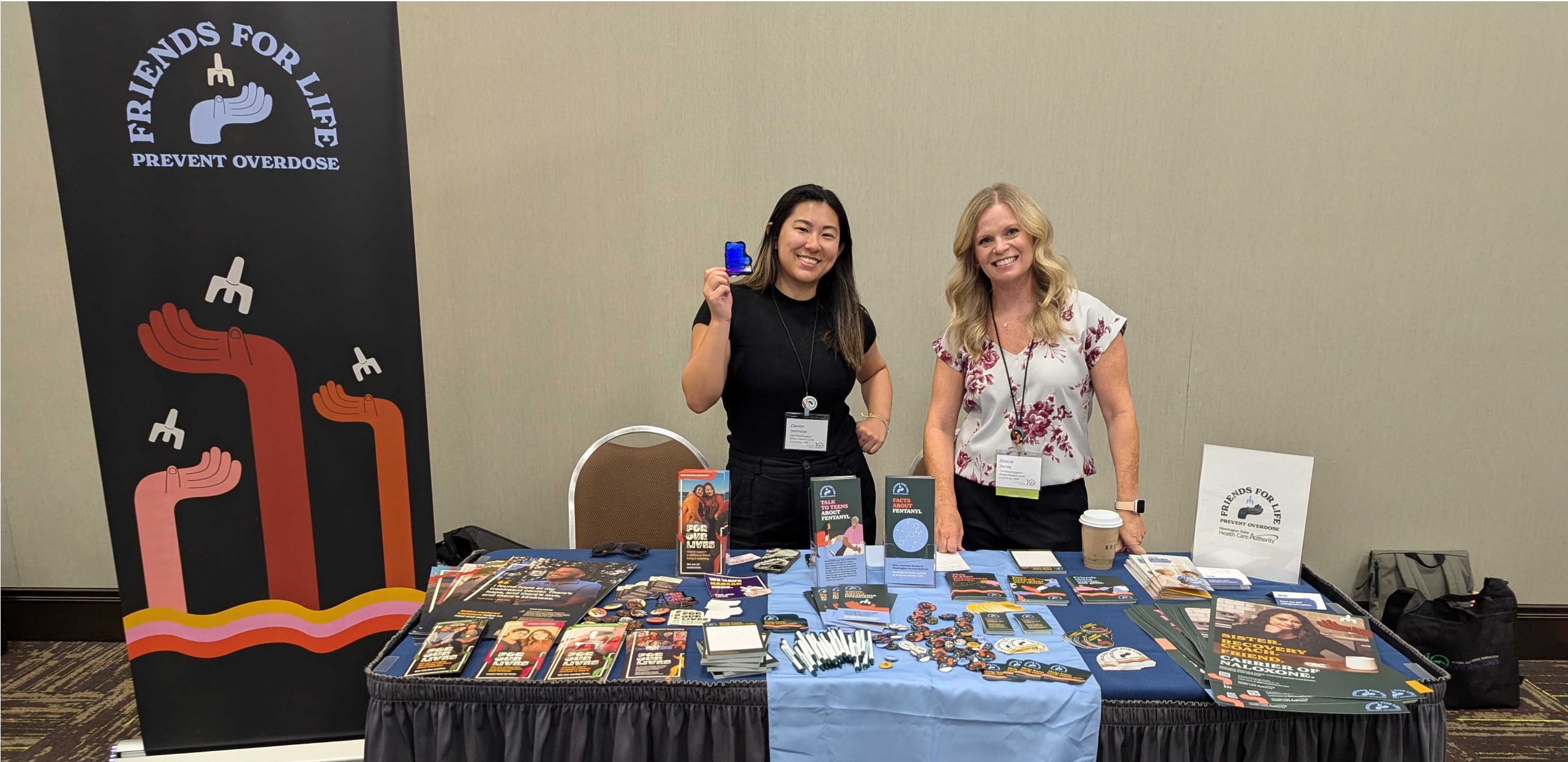DH colleagues Devan Iyomasa (left) and Stacie Jones talked with people from throughout the Northwest about Friends for Life, the Washington State Health Care Authority’s fentanyl-overdose prevention campaign. They were at an opioid summit in Boise.
In the public-health world, prevention advocates work to raise awareness and reduce the risk of drug use before it starts. Harm reduction advocates try to minimize the effects of drugs that are already happening.
Their work is often undertaken separately. Politically and ideologically, their approaches can feel far apart.
“But prevention and harm reduction messages can work together and even strengthen each other,” says Stacie Jones, a DH associate vice president. “Friends for Life has proven it is possible, and people are receptive to it.”
Stacie was part of a team of DHers and partners from the Washington State Health Care Authority who recently attended an opioid summit in Boise. Behavioral health professionals, health care providers, social workers, educators, policymakers and community leaders from Alaska, Idaho, Oregon and Washington attended the two-day event.
DH and HCA gave a presentation about Friends for Life, HCA’s statewide fentanyl overdose prevention campaign, and the importance of bridging prevention and harm reduction efforts.
Many conference participants told Stacie they were seeing, sometimes for the first time, that an effective campaign could both help teens build drug-refusal skills, for example, and teach people how to reverse an overdose by using naloxone.
“In the case of Friends for Life, a lot of it comes down to the messaging and illustrations, the tone the campaign is built on,” Stacie says. “It’s warm and friendly — audience members with very different experiences and perspectives tell us they feel connected to the campaign.”

